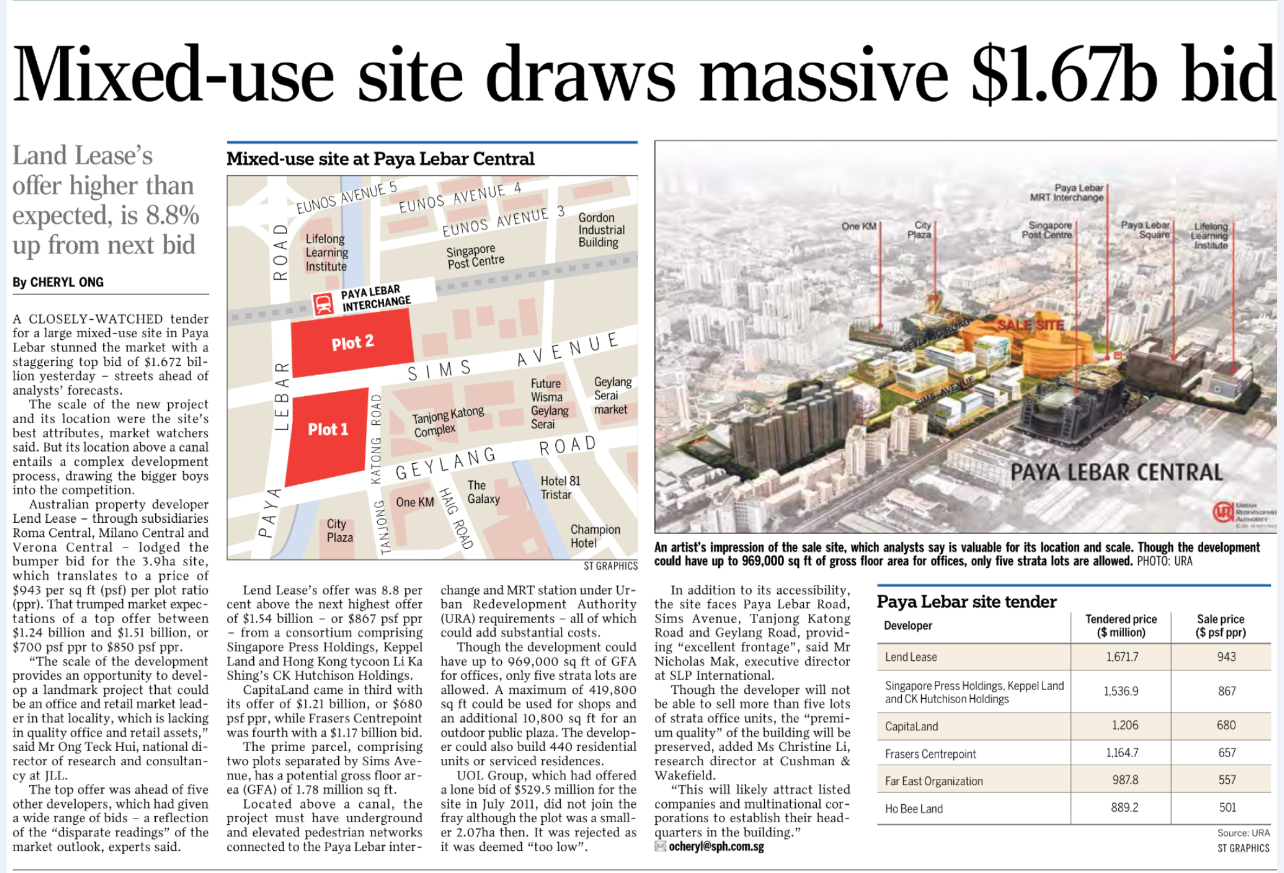4 firms link up for high-speed rail bid
A Japanese consortium has begun groundwork ahead of bidding for the high-speed rail (HSR) project linking Singapore to Kuala Lumpur.
Four major companies -the East Japan Railway Company (JR-East), Sumitomo Corporation, Hitachi and Mitsubishi Heavy Industries - intend to offer the efficiency and reliability of Japan's Shinkansen bullet train system.
Targeted for completion in 2020, the line will be between 320km and 340km in length and is undergoing an engineering study. Issues such as financing and governance will have to be worked out by both countries' governments before a tender can be called.
The Japanese consortium was formed a year ago. Singapore-based executives from JR-East and Sumitomo told The Straits Times on Wednesday that presentations were made to the Land Transport Authority last November, and Malaysia's Land Public Transport Commission this month.
Mr Katsuhito Horiguchi, general manager of the environment and infrastructure group at Sumitomo Corporation Asia and Oceania, said Sumitomo started looking for partners about three years ago.
While the exact roles of the four core members have yet to be decided, it is likely they will play to the strengths of each.
Trading house Sumitomo can be expected to drive the project development, while Shinkansen operator JR-East will offer train operations and maintenance know-how. Hitachi and Mitsubishi could supply the technical expertise.
It is the first time the four companies have joined together for an HSR project.
Sumitomo was part of another consortium that helped to build the Taiwan High Speed Rail, which opened in 2007, using technology similar to that of the Shinkansen system.
Mr Horiguchi said it is still too early to reveal the group's plans for the HSR, adding that they will depend on the requirements of both countries.
Achieving the Shinkansen's maximum commercial speed of 320kmh, with a train frequency of four minutes, would be possible, he said.
But what would separate the companies from rival bidders, tipped to come from Europe and China, will be safety.
Since the Shinkansen began in 1946, there have been no fatal incidents. "Safety is not just technology, but depends on education and training - the 'software'," said Mr Horiguchi.
Mr Yutaka Nomoto, executive director at JR-East's Singapore office, said the Singapore- Kuala Lumpur HSR is a highly feasible project because the distance is "ideal", adding: "If it's too long, people will take the plane. If it's too short, most people will drive."
The Straits Times / Singapore Published on Friday, 19 Sept 2014
By Adrian Lim adrianl@sph.com.sg
4 firms link up for high-speed rail bid
Please click the following for other Related Readings:
Please click the following for other Related Readings:













No comments:
Post a Comment